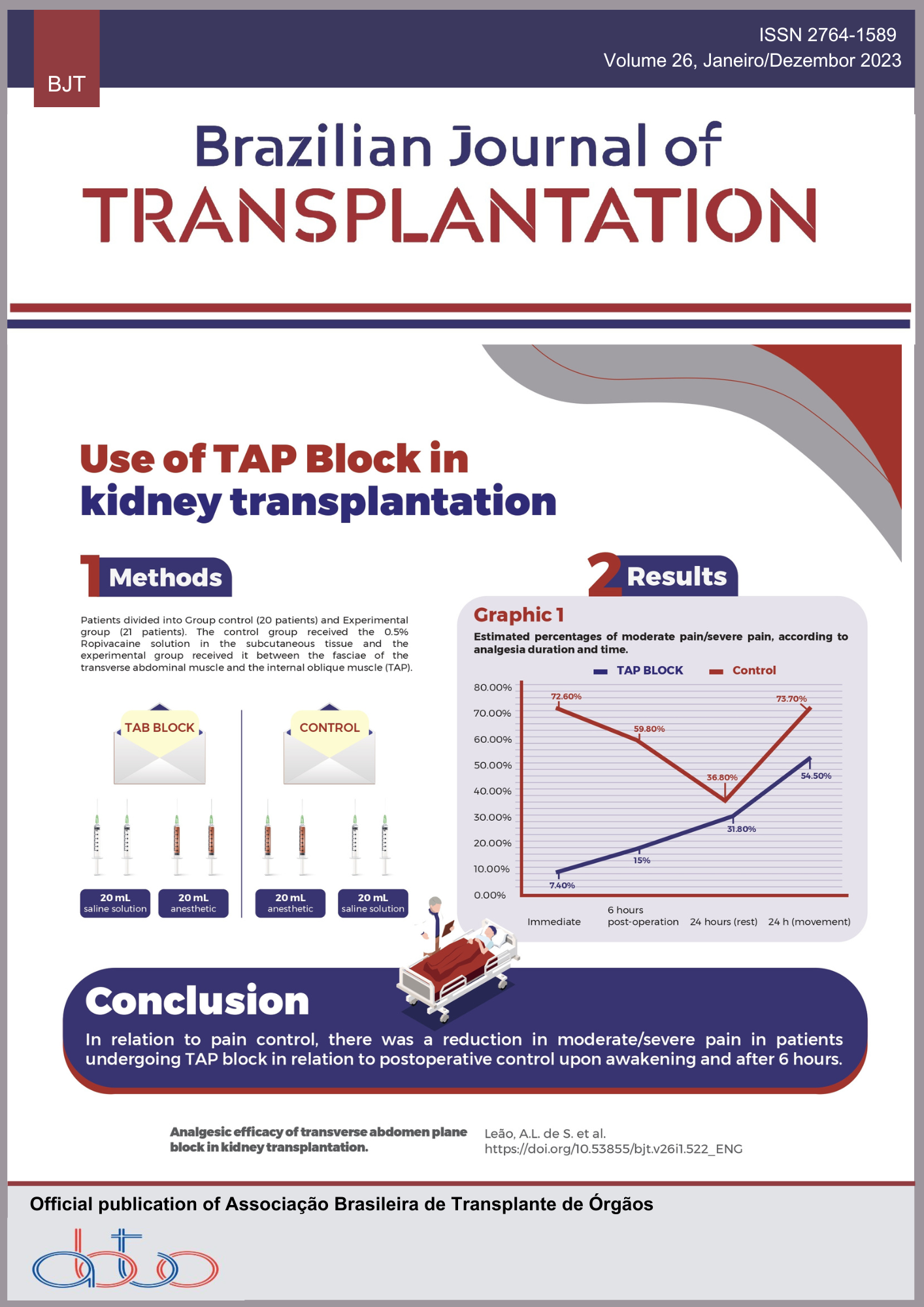Epidemiological Profile and Complications of Patients on the Waiting List for Liver Transplantation
Keywords:
Liver Transplantation, Health profile, Patient Care Team, NursingAbstract
Objective: To identify the epidemiological profile of candidates for liver transplantation and the complications that occurred up to the sixth month of admission to the waiting list. Method: Descriptive-exploratory study conducted in a liver transplant program located in a city in the interior of the state of São Paulo. Candidates aged ≥ 18 of both genders who entered the waiting list between January 1, 2018, and February 28, 2019, made up the study sample, totaling 51 patients. Data analysis was performed using descriptive statistics. Results: The average age of the participants was 52.7 years, most male (60.8%) with incomplete primary education (58.8%). Arterial hypertension was the most frequent comorbidity (51.4%). Most participants had blood type O (58.8%). The average Body Mass Index was 28.8 Kg/m2(overweight). Alcoholic cirrhosis was the most frequent indication for transplantation (31.4%). The average MELD score when joining the waiting list and six months later was 17.9 points. Class B of the Child-Pugh score had the highest frequency at the patient’s admission and the first follow-up. Ascites were the most frequent complication (56.9%), followed by portal hypertension (52.9%) and hepatic encephalopathy (33.3%). At the end of the study, 29 patients remained on the waiting list (56.9%), ten patients were transplanted(19.6%), and 12 died (23.5%). Conclusion: As for the epidemiological profile, the study’s results were in line with other studies, thatis, participants with a predominance of male biological sex, most frequent age group of 50 to 59 years and low level of education. Concerning the identified complications, ascites were the most frequent. Among participants who did not remain on the waiting list, the number of deaths was more significant than the number of transplants performed, evidence that differs from other studies.
Downloads
Downloads
Published
How to Cite
Issue
Section
License
Copyright (c) 2023 Lara Ribeiro Siqueira, Laura Ribeiro Siqueira, Karina Dal Sasso Mendes, Cristina Maria Galvão

This work is licensed under a Creative Commons Attribution 4.0 International License.









